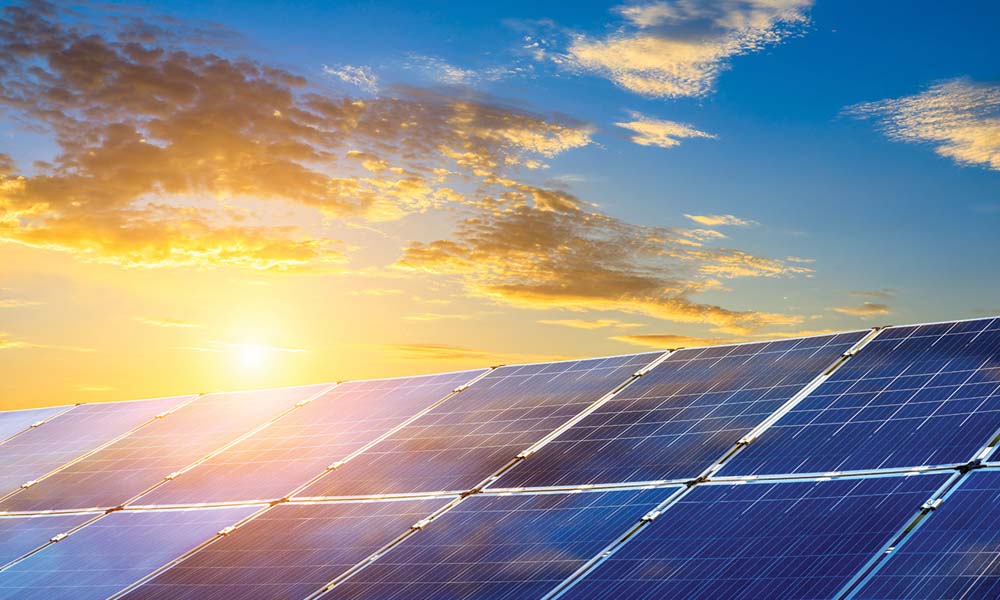Buckeye Power, the generation and transmission cooperative that provides electricity to Ohio’s 24 electric cooperatives, produces safe, affordable, and reliable power using an all-of-the-above generation strategy.
Since electricity can be generated in many ways, it makes sense to make use of any or all of them to produce the power that turns the lights on for the 400,000 Ohio co-op consumer-member households, farms, and businesses.
Each potential generating resource — coal plants, solar panels, hydropower facilities, etc. — produces power at a different level of reliability, environmental impact, and cost, so the trick is to balance each factor in the generation mix to produce electricity in the safest, cleanest, most economical, and most reliable way possible.
That’s already a complicated task, because some of those factors tend to be at odds with one another. In recent times, another factor has added another twist to those generation decisions: consumer attitudes.
“I think it’s important to know that I’m doing as much as I can to support green energy,” says Tom Kagy, a member of North Baltimore-based Hancock-Wood Electric Cooperative. Kagy, a retired insurance agent who also serves on Hancock-Wood’s board of trustees, was one of the first members to put in his subscription application for the cooperative’s community solar program, OurSolar.
Greening the grid
Buckeye Power introduced OurSolar in 2017, recognizing the interest that cooperative consumer-members around the state had in cleaner options for their energy consumption. That initial program was popular enough — Hancock-Wood, for example, sold all its available subscriptions in the first 10 days they were available — that the company now plans to expand the program over the next year.
In the first phase, Buckeye Power built 23 smaller arrays located in communities served by electric cooperatives around the state. Those panels produce a total of about 2 megawatts (MW) of electricity when at full output in sunny conditions. The second phase, currently in the planning stages, will add another 2 MW of production capacity — this time from a single 15-acre solar field near North Baltimore.
In comparison, the coal-fired units 2 and 3 at the Cardinal Plant, the aces of Buckeye Power’s deck of generation sources, together produce about 1,200 MW and are designed to generate electricity 24 hours a day.
Incremental change
“We still rely on coal to handle the majority of our generation needs, but we are excited to make incremental additions of other resources,” says Ben Wilson, Buckeye Power’s manager of power delivery engineering. “Solar, today, doesn’t save money for us or our members. If it were cheaper than producing power at Cardinal and we had an economical way to store the energy for those times when the sun isn’t shining, we might have to rethink our long-term generation strategy, but it’s not there yet.”
So even while it doesn’t make economic sense to build hundreds of megawatts worth of solar panels now, other factors mean that increasing solar production incrementally, at smaller levels, does.
“Right now, what we’re doing is a voluntary effort to introduce more renewable energy to our portfolio in a way that doesn’t increase overall costs, but still satisfies the demand we have from some members who want to have more renewable energy in their supply,” says Craig Grooms, Buckeye Power’s vice president of engineering and operations.
‘Energy accounting’
When energy enters the electric grid, there’s no way to distinguish solar energy from that generated by coal. Electric providers can’t send solar-generated electrons to one member’s house and those generated by coal to another.
“It’s essentially a matter of energy accounting,” Grooms says. “We put energy on the grid, measure it, and get paid for it. Consumers use electricity from the grid, have a meter that measures it, and they’re charged for that amount. In that equation, you can’t tell where it comes from.”
What providers like Buckeye Power can do, however, is to adjust the percentage of energy from different sources that’s put out onto the grid — when the sun is shining, for example, more can come from solar panels; when it’s dark or cloudy, more must come from coal.
As opposed to individually purchased rooftop panels, which require a substantial up-front investment from a consumer — an investment that usually is financed at payments much larger than most electric bills — the OurSolar program lets consumer-members pay a small premium on their electric bill to assure that a larger percentage of energy on the grid comes from solar panels.
“OurSolar opens the benefits of solar generation to anyone who receives an electric bill, including lower-income residents, businesses, municipalities, schools, and nonprofits,” says Pat O’Loughlin, president and CEO of Buckeye Power. “It gives members a lower-cost, more convenient option, compared to on-site solar.”
The subscription question
Individual cooperatives offer the opportunity for their members to participate in the OurSolar program in different ways. Some offer subscriptions that can be purchased by individual members, others provide it as a resource to all members. There’s no clear-cut “best” way to increase solar energy production; those decisions — like all co-op decisions — are made by local boards and management on behalf of and in the best interests of the membership.
Ultimately, the program reflects the cooperatives’ dedication to their most important objective.
“Ohio’s electric cooperatives will not waiver from our mission to supply affordable, reliable, and environmentally responsible power to our members,” O’Loughlin says. “Our decisions regarding the generation sources and the integration of renewable energy now and into the future can’t consider only one or two of those objectives; they have to meet all three.”
Percentage of Buckeye Power’s renewable generation from various sources
Ohio’s co-ops take a balanced approach to renewable energy. While continuing to support and utilize affordable coal-fired generation for the bulk of their power, Buckeye Power and its member cooperatives have made significant investments in renewable energy on behalf of Ohio co-op families.










